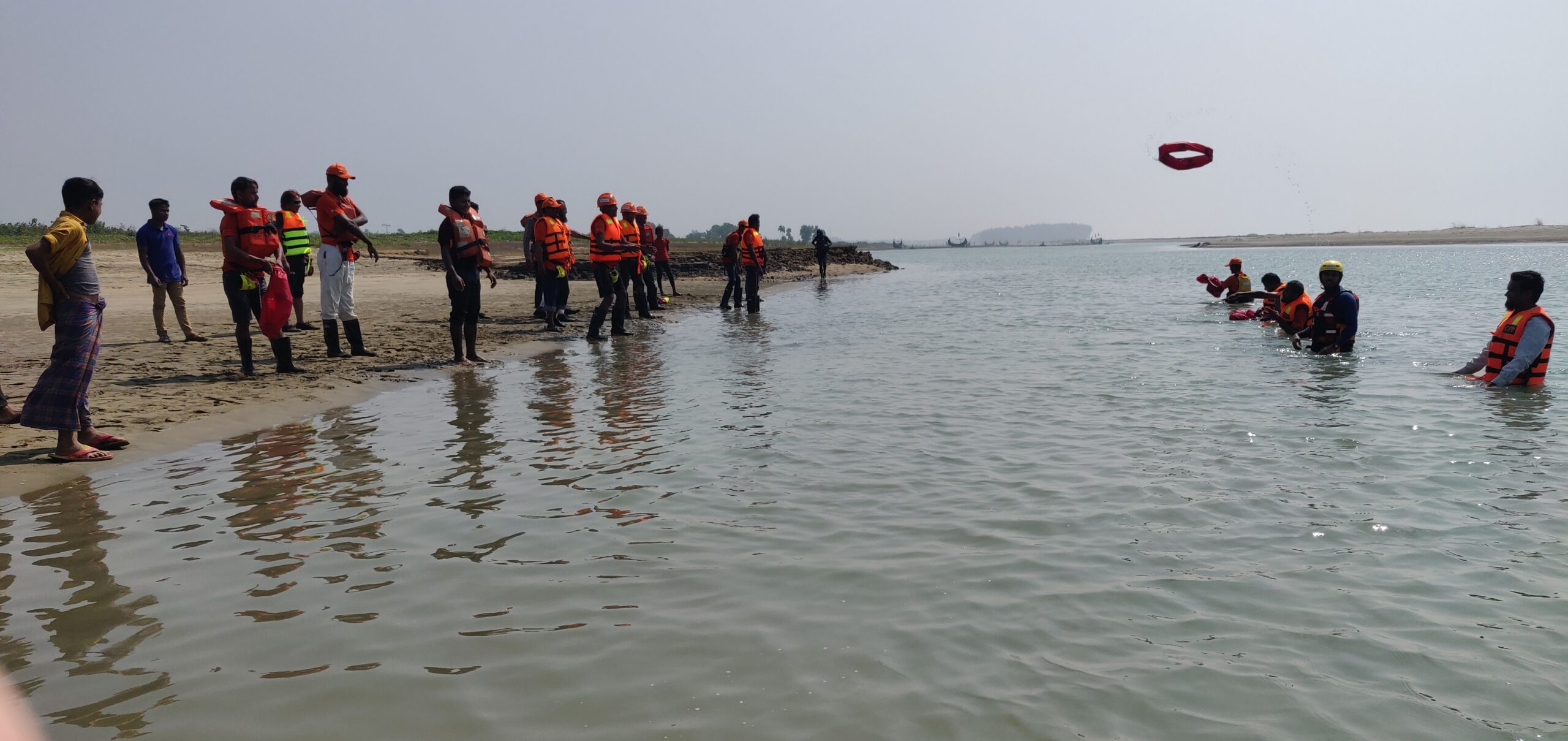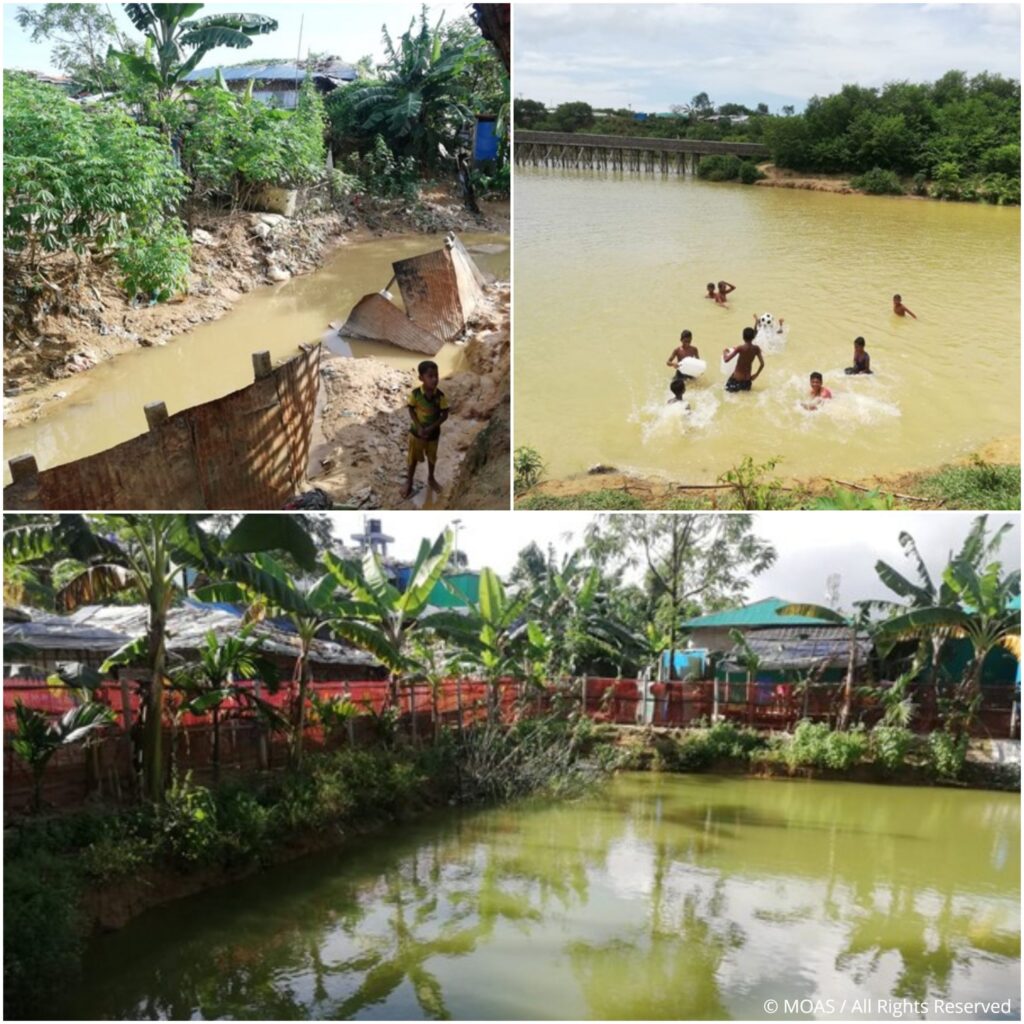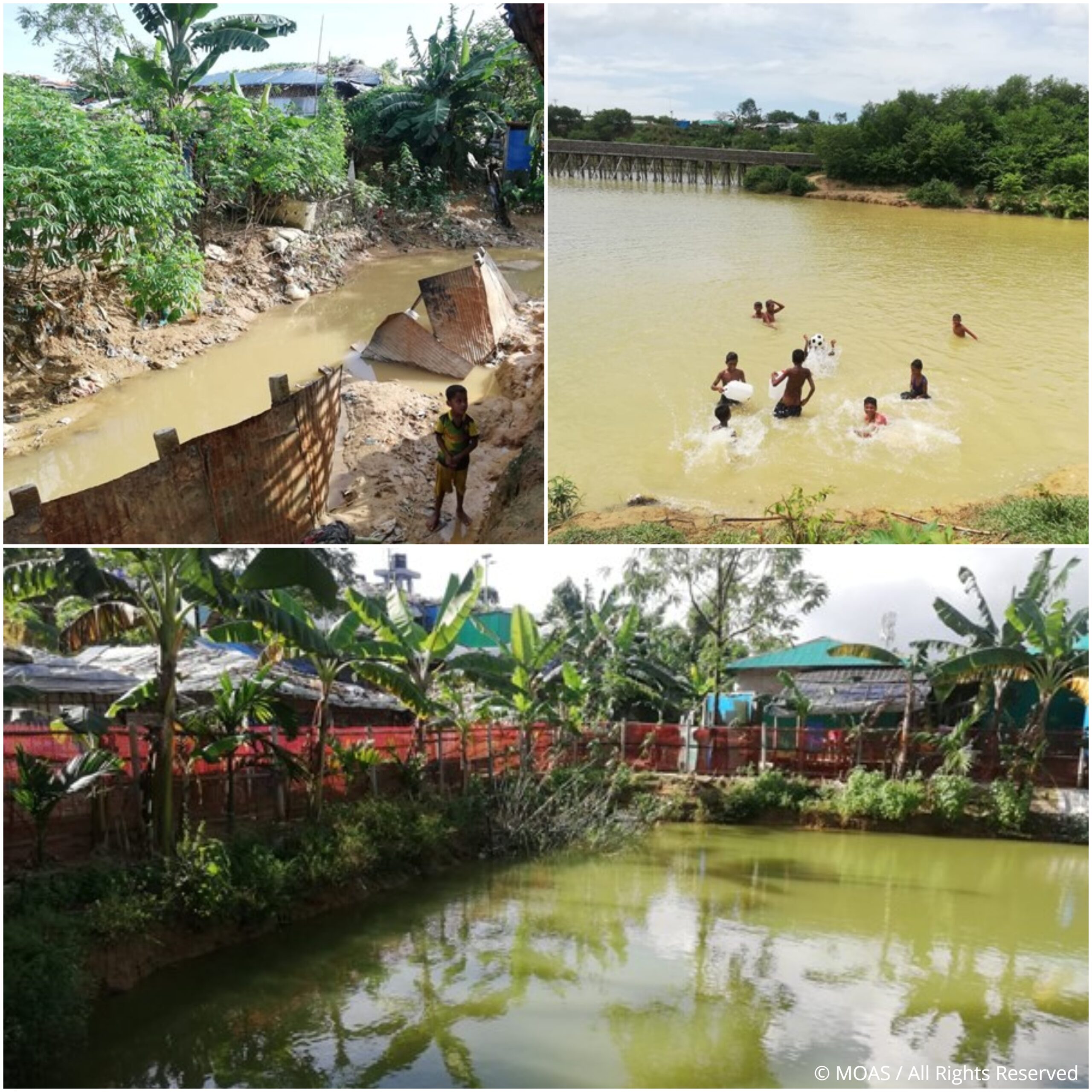“I will never forget the horrible moment my son’s best friend ran to tell me my child had disappeared into the pond when they were playing football. I rushed to the water. People were asking me why I was crying. Twenty or thirty people tried to rescue him, but by the time they got him out he was unconscious. We took him to an NGO hospital where they tried to revive him, but after 25 minutes they told me he was dead. He was 11 years old.” (Kamal, 53)
A Rohingya refugee child dies by drowning almost every month in Bangladesh’s over-crowded camps, according to new findings by MOAS.
Research, by the INGO which specialises in providing front-line support to those displaced by crises around the globe, found that at least 20 children have lost their lives in drowning accidents in the refugee camps in Cox’s Bazar over the past two years.
That equates to a preventable loss of close to one young life every month.
The findings revealed that most drowning fatalities in the camps are associated with males, the rainy monsoon season, daylight hours, inadequate supervision, and occur in ponds. Fatal drowning incidents among children under 5 usually occurred as they fell into nearby water whilst caregivers were occupied with household duties. The ages of the victims ranged from 2 to 17 years old. Fourteen (70%) of the victims were male and six (30%) were female. Six (30%) fatalities recorded were children under 5 and fourteen (70%) fatalities recorded were school age children (between 5 and 17 years old). Twelve (60%) of these fatalities occurred in ponds, three (15%) in canals, two (10%) in a deep man-made hole that had accumulated rain, and one (5%) each in a lake, reservoir and water bucket.
For school age children, fatal drowning incidents commonly occurred whilst playing or bathing in a water body without adult supervision and engaging in risky behaviours, primarily on breaks from or days without school or madrasa. COVID-19 related restrictions may have influenced an increase of drowning incidents among older children in 2020.
These human tragedies arise from the desperate conditions in the Bangladesh refugee camps, where survivors of atrocities in Myanmar are forced to live as long as authorities in their homeland continue to deny them their basic human rights and safe return.
The findings by MOAS – which has been providing expertise in the refugee camps since 2017 and has trained thousands of volunteers in flood and water-safety and rescue – show children of every age are falling victim to drownings related to camp conditions.
Regina Catrambone, MOAS co-founder and director, stated: “Drowning is leading cause of child mortality in Bangladesh that requires urgent intervention, as also confirmed by the General Assembly of the United Nations who recently issued a resolution on global drowning prevention. Through this research MOAS wants to promote greater awareness on the risks of drowning among Rohingya children in the refugee camps in the district of Cox’s Bazar so that adequate prevention strategies are put in place on a larger scale. The volunteers trained in the camps thanks to technical advice provided by MOAS can act as first aid responders in case of water-related emergencies and therefore save lives, including those of children. We hope that similar lifesaving training targeted at the children can be implemented in future, together with other preventative interventions, such as installation of fences and barriers around the unsafe ponds, if missing, increased supervision and teaching school age children basic water safety and rescue skills.”
“It is important to understand that the threat to Rohingya lives did not end when they crossed the border into Bangladesh,” Regina Catrambone, continues. “Despite the efforts and the improvements that have been done by the Bangladeshi authorities, the UN and INGOs, conditions in the camps remain dangerous, and tragically young children are among those most at risk of avoidable deaths and particularly by drowning.”
Open sewers, latrines and other water sources pose deadly risks to around 500,000 children for whom the camp is currently home.
Hundreds of thousands of Muslim-minority Rohingya fled over the border into Bangladesh in just a few weeks beginning in late August 2017. They were escaping violence by Myanmar authorities that was so brutal the country is currently facing genocide proceedings in international courts. Arriving in Cox’s Bazar they joined others who had fled previous waves of violence in Myanmar. Currently over 800,000 Rohingya are sheltering in the district of Cox’s Bazar. Since 2017 MOAS was one of the first INGOs on the scene to provide support and has continued to offer work with partners offering technical expertise and support on disaster risk reduction.
While the Bangladesh government and local residents in Cox’s Bazar have rightly been praised for their initial generous welcoming of the refugees and considerable improvements have been made since the start of the crisis, conditions in the camps remain extremely over-crowded and hazardous.
MOAS Flood and Water Safety training
In response to the high probability of landslides, floods, sudden floods and storm surges during the monsoon season, MOAS is committed to building water safety capability. Since 2019 MOAS was providing its expertise and technical advice for the prevention from the risk of drowning through the Flood and Water safety training for the refugees and the host community. MOAS trained almost 3000 volunteers in 2 years (2019-2020) and the training is ongoing in 2021.

Additionally, MOAS – which was the first SAR organization to provide life-saving rescue operations to people who were attempting to cross the Mediterranean Sea – also provided a basic maritime safety and rescue course to 800 local fishermen allowing them to gain the necessary skills to rescue people at sea, be better prepared for emergency situations, and work in a safer manner.
Full report here: https://www.moas.eu/wp-content/uploads/2021/05/moas-investigating-fatal-childhood-drowning-incidents-2021.pdf
PRESS ENQUIRIES:
Francesca Pierpaoli
PR & Communications Officer
Tel. +356 79900097
_____________________________________________________________
About MOAS
MOAS is an international humanitarian organization founded by the Catrambone family in 2013 and dedicated to providing humanitarian assistance and services to the most vulnerable communities around the world. Since its inception, MOAS has reached hundreds of thousands of people through its activities. After several Search and Rescue missions in the Mediterranean Aegean and Andaman seas, MOAS expanded its operations to Bangladesh, to assist Rohingya refugees fleeing violence in Myanmar and the local host community. Today MOAS is currently also involved in several missions in Yemen and Somalia assisting the most vulnerable communities by delivering nutritional and medical aid. MOAS also operate in Malta with various projects to assist migrant communities. With the #SafeAndLegalRoutes campaign, MOAS is advocating to governments and international institutions to fight exploitative and dangerous migration routes and human trafficking by increasing safe and legal pathways of migration that exist on paper but are not sufficiently supported practice to allow the most vulnerable people to safely reach the countries of destination. MOAS has consultative status of Ecosoc and is member of the Malta Refugee Council.
Info: www.moas.eu


